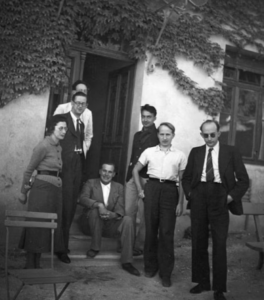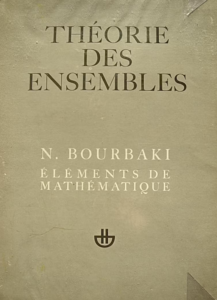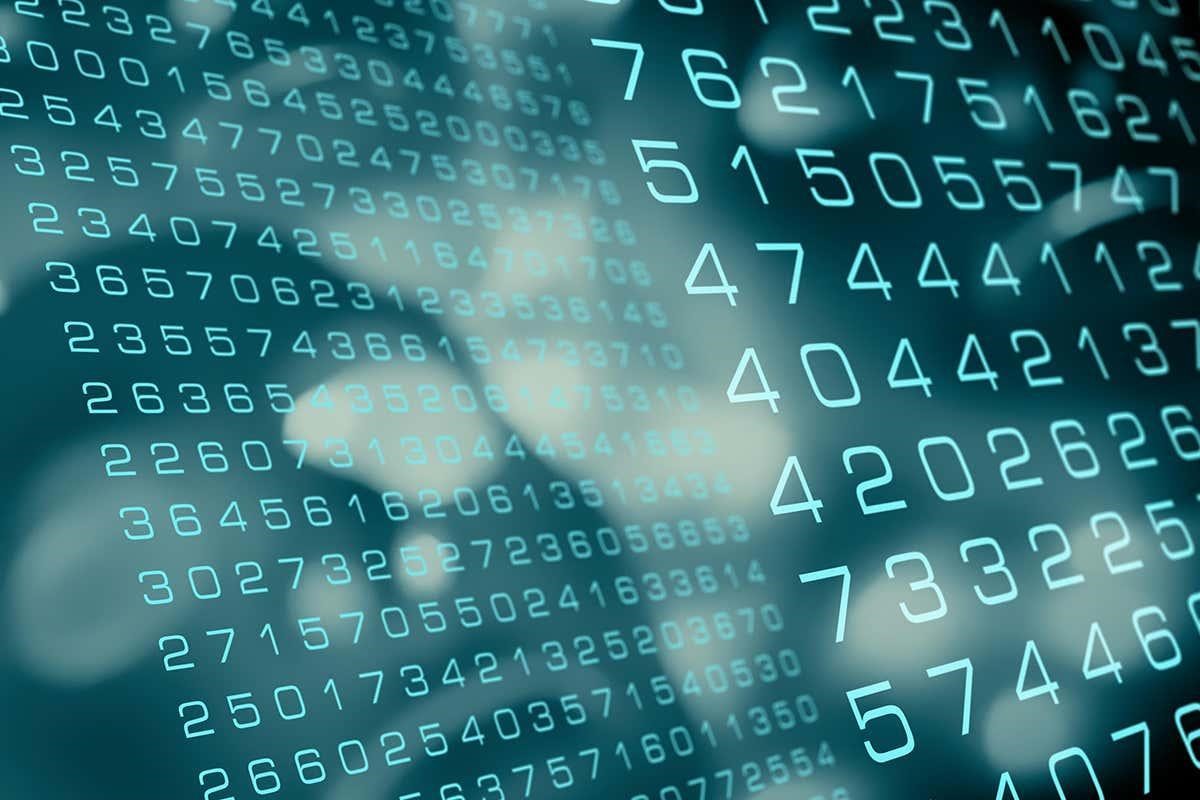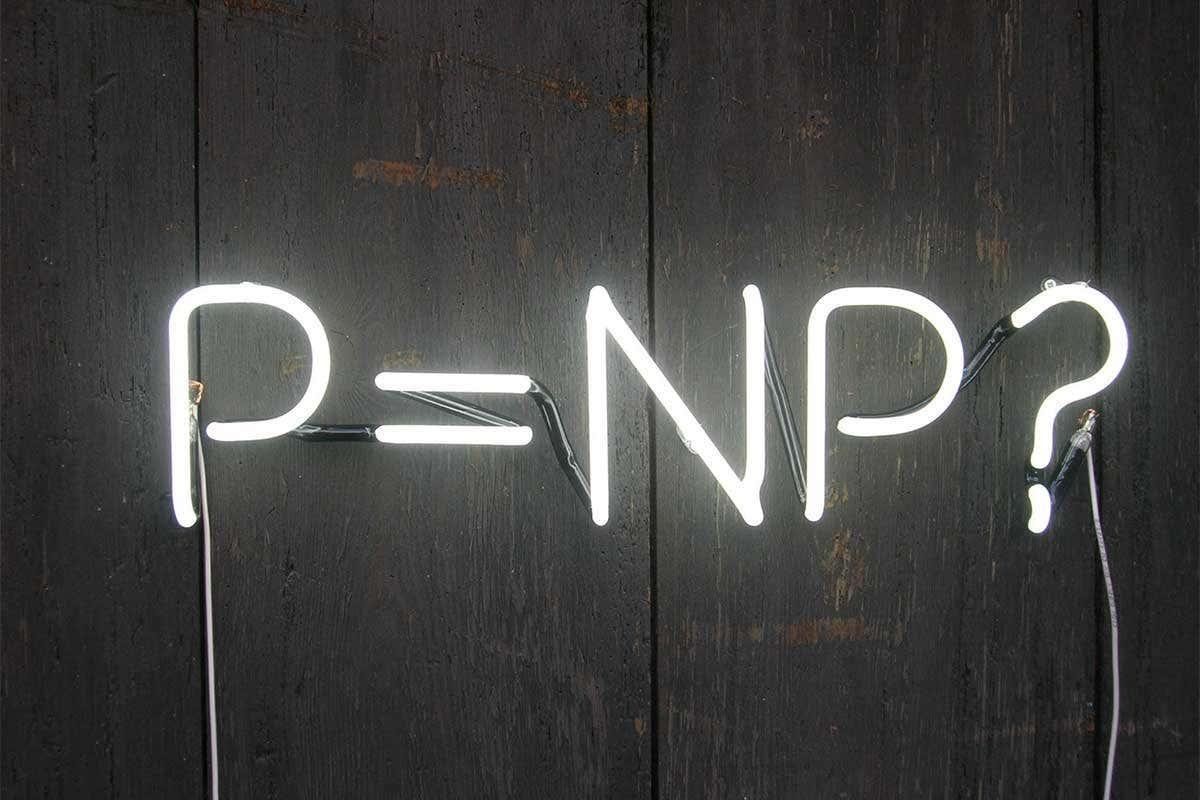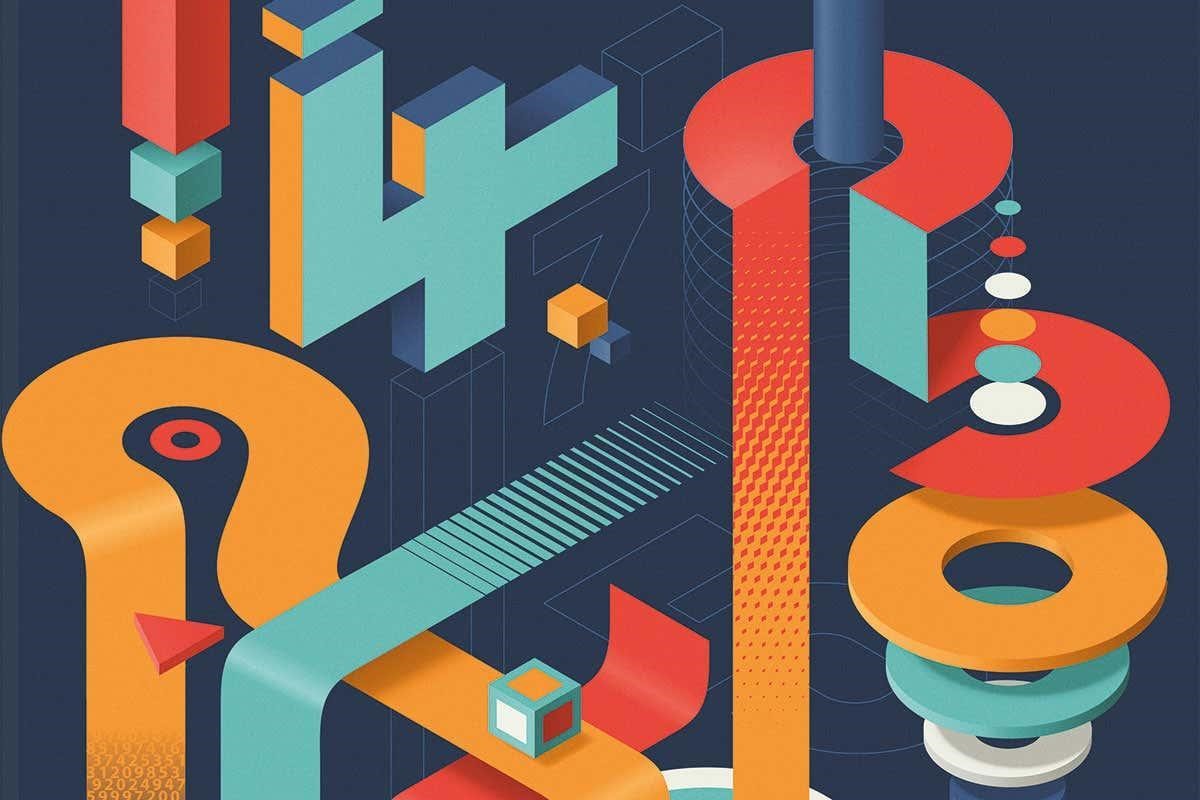For millennia mathematicians have struggled to unify arithmetic and geometry. Now one young genius could have brought them in sight of the ultimate prize.
IF JOEY was Chloe’s age when he was twice as old as Zoe was, how many times older will Zoe be when Chloe is twice as old as Joey is now?
Or try this one for size. Two farmers inherit a square field containing a crop planted in a circle. Without knowing the exact size of the field or crop, or the crop’s position within the field, how can they draw a single line to divide both the crop and field equally?
You’ve either fallen into a cold sweat or you’re sharpening your pencil (if you can’t wait for the answer, you can check the bottom of this page). Either way, although both problems count as “maths” – or “math” if you insist – they are clearly very different. One is arithmetic, which deals with the properties of whole numbers: 1, 2, 3 and so on as far as you can count. It cares about how many separate things there are, but not what they look like or how they behave. The other is geometry, a discipline built on ideas of continuity: of lines, shapes and other objects that can be measured, and the spatial relationships between them.
Mathematicians have long sought to build bridges between these two ancient subjects, and construct something like a “grand unified theory” of their discipline. Just recently, one brilliant young researcher might have brought them decisively closer. His radical new geometrical insights might not only unite mathematics, but also help solve one of the deepest number problems of them all: the riddle of the primes. With the biggest prizes in mathematics, the Fields medals, to be awarded this August, he is beginning to look like a shoo-in.
The ancient Greek philosopher and mathematician Aristotle once wrote, “We cannot… prove geometrical truths by arithmetic.” He left little doubt he believed geometry couldn’t help with numbers, either. It was hardly a controversial thought for the time. The geometrical proofs of Aristotle’s near-contemporary Euclid, often called the father of geometry, relied not on numbers, but logical axioms extended into proofs by drawing lines and shapes. Numbers existed on an entirely different, more abstract plane, inaccessible to geometers’ tools.
And so it largely remained until, in the 1600s, the Frenchman René Descartes used the techniques of algebra – of equation-solving and the manipulation of abstract symbols – to put Euclid’s geometry on a completely new footing. By introducing the notion that geometrical points, lines and shapes could all be described by numerical coordinates on an underlying grid, he allowed geometers to make use of arithmetic’s toolkit, and solve problems numerically.
This was a moonshot that let us, eventually, do things like send rockets into space or pinpoint positions to needle-sharp accuracy on Earth. But to a pure mathematician it is only a halfway house. A circle, for instance, can be perfectly encapsulated by an algebraic equation. But a circle drawn on graph paper, produced by plotting out the equation’s solutions, would only ever capture a fragment of that truth. Change the system of numbers you use, for example – as a pure mathematician might do – and the equation remains valid, while the drawing may no longer be helpful.
Wind forward to 1940 and another Frenchman was deeply exercised by the divide between geometry and numbers. André Weil was being held as a conscientious objector in a prison just outside Rouen, having refused to enlist in the months preceding the German occupation of France – a lucky break, as it turned out. In a letter to his wife, he wrote: “If it’s only in prison that I work so well, will I have to arrange to spend two or three months locked up every year?”
Weil hoped to find a Rosetta stone between algebra and geometry, a reference work that would allow truths in one field to be translated into the other. While behind bars, he found a fragment.
It had to do with the Riemann hypothesis, a notorious problem concerning how those most fascinating numbers, the primes, are distributed (see below). There had already been hints that the hypothesis might have geometrical parallels. Back in the 1930s, a variant had been proved for objects known as elliptic curves. Instead of trying to work out how prime numbers are distributed, says mathematician Ana Caraiani at Imperial College London, “you can relate it to asking how many points a curve has”.
Weil proved that this Riemann-hypothesis equivalent applied for a range of more complicated curves too. The wall that had stood between the two disciplines since Ancient Greek times finally seemed to be crumbling. “Weil’s proof marks the beginning of the science with the most un-Aristotelian name of arithmetic geometry,” says Michael Harris of Columbia University in New York.
The Riemann Hypothesis: The million-dollar question
The prime numbers are the atoms of the number system, integers indivisible into smaller whole numbers other than one. There are an infinite number of them and there is no discernible pattern to their appearance along the number line. But their frequency can be measured – and the Riemann hypothesis, formulated by Bernhard Riemann in 1859, predicts that this frequency follows a simple rule set out by a mathematical expression now known as the Riemann zeta function.
Since then, the validity of Riemann’s hypothesis has been demonstrated for the first 10 trillion primes, but an absolute proof has yet to emerge. As a mark of the problem’s importance, it was included in the list of seven Millennium Problems set by the Clay Mathematics Institute in New Hampshire in 2000. Any mathematician who can tame it stands to win $1 million.
In the post-war years, in the more comfortable setting of the University of Chicago, Weil tried to apply his insight to the broader riddle of the primes, without success. The torch was taken up by Alexander Grothendieck, a mathematician ranked as one of the greatest of the 20th century. In the 1960s, he redefined arithmetic geometry.
Among other innovations, Grothendieck gave the set of whole numbers what he called a “spectrum”, for short Spec(Z). The points of this undrawable geometrical entity were intimately connected to the prime numbers. If you could ever work out its overall shape, you might gain insights into the prime numbers’ distribution. You would have built a bridge between arithmetic and geometry that ran straight through the Riemann hypothesis.
The shape Grothendieck was seeking for Spec(Z) was entirely different from any geometrical form we might be familiar with: Euclid’s circles and triangles, or Descartes’s parabolas and ellipses drawn on graph paper. In a Euclidean or Cartesian plane, a point is just a dot on a flat surface, says Harris, “but a Grothendieck point is more like a way of thinking about the plane”. It encompasses all the potential uses to which a plane could be put, such as the possibility of drawing a triangle or an ellipse on its surface, or even wrapping it map-like around a sphere.
If that leaves you lost, you are in good company. Even Grothendieck didn’t manage to work out the geometry of Spec(Z), let alone solve the Riemann hypothesis. That’s where Peter Scholze enters the story.
“Even the majority of mathematicians find most of the work unintelligible”
Born in Dresden in what was then East Germany in 1987, Scholze is currently, at the age of 30, a professor at the University of Bonn. He laid the first bricks for his bridge linking arithmetic and geometry in his PhD dissertation, published in 2012 when he was 24. In it, he introduced an extension of Grothendieck-style geometry, which he termed perfectoid geometry. His construction is built on a system of numbers known as the p-adics that are intimately connected with the prime numbers (see “The p-adics: A different way of doing numbers”). The key point is that in Scholze’s perfectoid geometry, a prime number, represented by its associated p-adics, can be made to behave like a variable in an equation, allowing geometrical methods to be applied in an arithmetical setting.
It’s not easy to explain much more. Scholze’s innovation represents “one of the most difficult notions ever introduced in arithmetic geometry, which has a long tradition of difficult notions”, says Harris. Even the majority of working mathematicians find most of it unintelligible, he adds.
Be that as it may, in the past few years, Scholze and a few initiates have used the approach to solve or clarify many problems in arithmetic geometry, to great acclaim. “He’s really unique as a mathematician,” says Caraiani, who has been collaborating with him. “It’s very exciting to be a mathematician working in the same field.”
This August, the world’s mathematicians are set to gather in Rio de Janeiro, Brazil, for their latest international congress, a jamboree held every four years. A centrepiece of the event is the awarding of the Fields medals. Up to four of these awards are given each time to mathematicians under the age of 40, and this time round there is one name everyone expects to be on the list. “I suspect the only way he can escape getting a Fields medal this year is if the committee decides he’s young enough to wait another four years,” says Marcus du Sautoy at the University of Oxford.
Peter Scholze, 30, looks like a shoo-in for mathematics’s highest accolade this summer
With so many grand vistas opening up, the question of Spec(Z) and the Riemann hypothesis almost becomes a sideshow. But Scholze’s new methods have allowed him to study the geometry, in the sense Grothendieck pioneered, that you would see if you examined the curve Spec(Z) under a microscope around the point corresponding to a prime number p. That is still a long way from understanding the curve as a whole, or proving the Riemann hypothesis, but his work has given mathematicians hope that this distant goal might yet be reached. “Even this is a huge breakthrough,” says Caraiani.
Scholze’s perfectoid spaces have enabled bridges to be built in entirely different directions, too. A half-century ago, in 1967, the then 30-year-old Princeton mathematician Robert Langlands wrote a tentative letter to Weil outlining a grand new idea. “If you are willing to read it as pure speculation I would appreciate that,” he wrote. “If not – I am sure you have a waste basket handy.”
In his letter, Langlands suggested that two entirely distinct branches of mathematics, number theory and harmonic analysis, might be related. It contained the seeds of what became known as the Langlands program, a vastly influential series of conjectures some mathematicians have taken to calling a grand unified theory capable of linking the three core mathematical disciplines: arithmetic, geometry and analysis, a broad field that we encounter in school in the form of calculus. Hundreds of mathematicians around the world, including Scholze, are committed to its completion.
The full slate of Langlands conjectures is no more likely than the original Riemann hypothesis to be proved soon. But spectacular discoveries could lie in store: Fermat’s last theorem, which took 350 years to prove before the British mathematician Andrew Wiles finally did so in 1994, represents just one particular consequence of its conjectures. Recently, the French mathematician Laurent Fargues proposed a way to build on Scholze’s work to understand aspects of the Langlands program concerned with p-adics. It is rumoured that a partial solution could appear in time for the Rio meeting.
In March, Langlands won the other great mathematical award, the Abel prize, for his lifetime’s work. “It took a long time for the importance of Langlands’s ideas to be recognised,” says Caraiani, “and they were overdue for a major award.” Scholze seems unlikely to have to wait so long.
The p-adics: A different way of doing numbers
Key to the latest work in unifying arithmetic and geometry are p-adic numbers.
These are an alternative way of representing numbers in terms of any given prime number p. To make a p-adic number from any positive integer, for example, you write that number in base p, and reverse it. So to write 20 in 2-adic form, say, you take its binary, or base-2, representation – 10100 – and write it backwards, 00101. Similarly 20’s 3-adic equivalent is 202, and as a 4-adic it is written 011.
The rules for manipulating p-adics are a little different, too. Most notably, numbers become closer as their difference grows more divisible by whatever p is. In the 5-adic numbers, for example, the equivalents of 11 and 36 are very close because their difference is divisible by 5, whereas the equivalents of 10 and 11 are further apart.
For decades after their invention in the 1890s, the p-adics were just a pretty mathematical toy: fun to play with, but of no practical use. But in 1920, the German mathematician Helmut Hasse came across the concept in a pamphlet in a second-hand bookshop, and became fascinated. He realised that the p-adics provided a way of harnessing the unfactorisability of the primes – the fact they can’t be divided by other numbers – that turned into a shortcut to solving complicated proofs.
Since then, p-adics have played a pivotal part in the branch of maths called number theory. When Andrew Wiles proved Fermat’s infamous last theorem (that the equation xn + yn = zn has no solutions when x, y and z are positive integers and n is an integer greater than 2) in the early 1990s, practically every step in the proof involved p-adic numbers.
- Answers: Zoe will be three times as old as she is now. The farmers should draw a line across the field that connects the centre points of the field and the crop.
This article appeared in print under the headline “The shape of numbers”
For more such insights, log into www.international-maths-challenge.com.
*Credit for article given to Gilead Amit*
